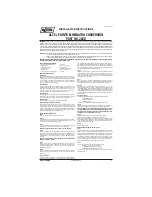
Depending on the person in the front-
passenger seat, the front-passenger front air
bag must either be disabled or enabled; see
the following points. You must make sure of
this both before and during a journey.
R
Children in a child restraint system:
whether the front-passenger front air bag is
enabled or deactivated depends on the
installed child restraint system, and the age
and size of the child. Therefore, be sure to
observe the notes on the "Occupant clas-
sification system (OCS)" (
Y
page 51) and
on "Children in the vehicle" (
Y
page 59).
There you will also find instructions on
backwards- and forwards-facing child
restraint systems on the front-passenger
seat.
R
All other persons: depending on the clas-
sification of the person in the front-
passenger seat, the front-passenger front
air bag is enabled or deactivated
(
Y
page 51). Be sure to observe the notes
on "Seat belts“ (
Y
page 44) and "Air bags"
(
Y
page 48). There you can also find infor-
mation on the correct seat position.
Seat belts
Introduction
A correctly fastened seat belt is the most
effective means of restraining the movement
of vehicle occupants in the event of an acci-
dent or overturn. This reduces the risk of
vehicle occupants coming into contact with
parts of the vehicle interior or being thrown
from the vehicle. Furthermore, the seat belt
helps to keep the vehicle occupants in the
best position in relation to the air bag.
The seat belt system consists of:
R
Seat belts
R
Emergency Tensioning Devices for the
front seat belts and the outer seat belts in
the rear compartment
R
Belt force limiters for the front seat belts
and the outer seat belts in the rear
If the seat belt is pulled quickly or suddenly
from the belt sash guide, the inertia reel
locks. The belt strap cannot be pulled out fur-
ther.
Emergency Tensioning Devices tighten the
seat belts in an accident, pulling them close
against the occupant's body. They do not,
however, pull vehicle occupants back
towards the backrest.
Emergency Tensioning Devices do not cor-
rect an incorrect seat position or incorrectly
worn seat belts.
When activated, the belt force limiters reduce
the force exerted by the seat belt on the vehi-
cle occupants.
The belt force limiters for the front seats are
synchronized with the front air bags, which
absorb part of the deceleration force. This
makes it possible to reduce the forces to
which vehicle occupants are subjected during
an accident.
!
If the front-passenger seat is unoccupied,
do not insert the belt tongue into the buckle
of the front-passenger seat. This may oth-
erwise lead to the triggering of the Emer-
gency Tensioning Device in the event of an
accident, which will then need to be
replaced.
Important safety notes
The use of seat belts and child restraint sys-
tems is required by law in:
R
all 50 states
R
the U.S. territories
R
the District of Columbia
R
all Canadian provinces
Even where this is not required by law, all
vehicle occupants should correctly fasten
their seat belts before starting the journey.
G
WARNING
If the seat belt is incorrectly fastened, it can-
not protect as intended. Furthermore, an
incorrectly fastened seat belt can cause addi-
tional injury, for example, in an accident, dur-
44
Occupant safety
Safe
ty
Summary of Contents for 2008 C 300 4MATIC Sport
Page 4: ......
Page 32: ...30 ...
Page 42: ...40 ...
Page 80: ...78 ...
Page 124: ...122 ...
Page 156: ...154 ...
Page 230: ...228 ...
Page 298: ...296 ...
Page 299: ...Useful information 298 Stowage areas 298 Features 306 297 Stowage and features ...
Page 340: ...338 ...
Page 396: ...394 ...
















































